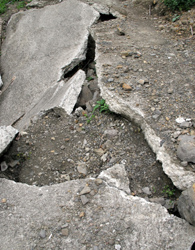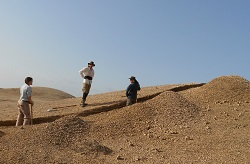Examining seismic data of the Dead Sea region
Many regions in the Middle East are along the Dead Sea fault, an area prone to major seismic events. Large earthquakes are devastating because of the loss of life as well as costly due to severe structural damage. Given the rich cultural heritage of these regions and their ancient cities, citadels, fortresses and archeological sites, the APAME project sought to inventory and study their seismic hazard vulnerability. This was done by combining historical, archaeological and earthquake hazard studies. The case study of the project revealed that a vast amount of data was collected and important results were provided. However, the absence of critical seismological data such as seismometer and accelerometer recordings prevented the construction of full seismic hazard analysis. Sample scenarios from previous studies and from Lebanon offer some seismic hazard assessment but what is still needed is a thorough parametric seismic catalogue that canvasses S.E. Turkey, Syria, Lebanon, Israel, Palestine and Jordan. Precise locations of these regions and the intensity of their historical and instrumental seismic events are required. Recent earthquakes may offer insight on the velocity structures, crustal behaviour at depth and surface and rate of active deformation along the Dead Sea Fault. In all likelihood, non-linear hazard mapping programmes are not currently available to take such conditions into account. However, the APAME project can offer evidence of seismic hazard of the past via archeo-paleoseismic studies which can serve to enhance current and future knowledge.







